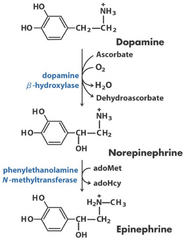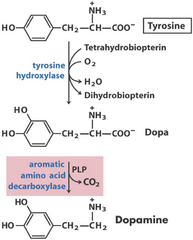16. Nervous system I
Brain metabolism
The neurons mainly use glucose as their energy source, but during starvation they can also use ketones. Neurons express GLUT3 which has a very high affinity for glucose, which gives neurons a very fast glucose uptake. Neurons need this energy because maintaining the membrane potential requires the use of the Na+/K+ ATPase. Glial cells express GLUT1, the “universal” glucose transporter, because they’re not as dependent on a fast glucose uptake.
Neurons have two types of hexokinase, one soluble and one bound to the mitochondrial membrane. They also need lactate dehydrogenase to utilize energy supplied by lactate if needed. This lactate is produced by astrocytes. Astrocytes can metabolize lipids to provide the energy to produce this lactate. The neurons then convert the lactate to pyruvate and use it to feed the TCA.
In the brain is GABA produced from glutamate instead of α-ketoglutarate, as the latter is needed for the TCA cycle. Neurons use glutaminase to convert glutamine into glutamate for this synthesis.
The brain has very high levels of cholesterol, which is needed for many things like myelin sheaths. Cholesterol cannot cross the blood-brain barrier, so the brain synthesizes its own cholesterol.
A protein called Agrin is essential in the formation of the neuromuscular junction.
Neurotransmitter synthesis
Some reactions of the neurotransmitter synthesis are in the MRTs, but some aren’t but we have to know them anyway. I don’t think we need to know the structures. They’re pictured below.




